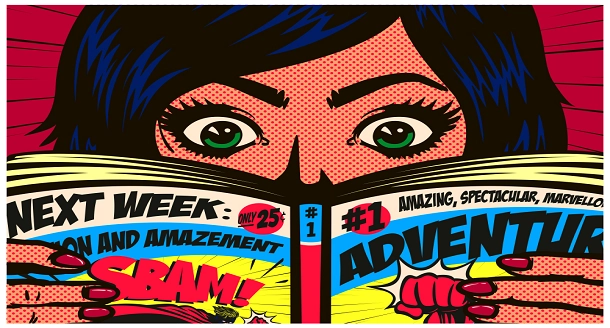The benefits of reading a comic book are many, but perhaps the most important is that it opens the mind to new ways of storytelling and increases imagination. Combined with text, comics make a wonderful combination of visuals and text, allowing readers to learn about a wide variety of topics. The resulting excitement and curiosity translates into learning for all ages. Learning through comics will make the experience more enjoyable and memorable.
Education:
Comics are a unique and effective way to convey a huge amount of information, and they have been proven to help students retain information longer than traditional textbooks. The numerous benefits of comics in the education setting are numerous and include improving students’ self-esteem, engaging them in the learning process, and increasing their retention of information. In addition to these benefits, comics are also a fun way to learn. The benefits of reading comics are numerous, and they should be considered by educators and parents as part of the educational process.
Literacy:
The literacy benefits of reading educational comics are numerous, ranging from increasing vocabulary and reading motivation to improving students’ critical thinking skills. However, some drawbacks of comics have been noted, including their perceived lack of educational value. Governmental curriculums only cover a few works of literature, so comics are often viewed as less than worthy of inclusion in a classroom. However, with the right resources, educators can use comics to support their teaching goals.
Social issues:
One study has examined the social and emotional benefits of reading educational comics. This study was a pre-post intervention, in which people completed pre-post questionnaires to measure the amount of information they had learnt and retained, and the extent to which their attitudes or behaviour had changed. This is the first study of its kind to investigate the effect of comics on a broader spectrum of social and emotional issues.
Use of graphic novels:
The use of graphic novels in education has been found to be especially effective for students with ASD, as they can cross the boundaries of self and other and encourage empathy and perspective-taking. Another study has demonstrated that comics are particularly effective for tackling controversial societal issues, such as racism. Social issues can be tackled through comics as well, as they are designed to encourage dialogic conversation. However, not all educational comics are created equal.
Art education:
Aside from providing a unique perspective on art history, students can also benefit from the comics’ visual and textual content. Comics have the potential to enhance language, literacy, and critical thinking skills. The benefits of reading comics in education are numerous, but the challenges of using them in classrooms still remain. First of all, a significant amount of research must be conducted. Comics have been deemed trivial by many, but recent studies have demonstrated their educational benefits.
Benefits of reading educational comics:
One of the most significant benefits of reading educational comics in the classroom is the fact that they are affordable and versatile. Comics with educational data are more appealing than textbooks, which can become boring for students over time. Additionally, students can review material that was previously taught in class with the help of wordless picture comics. These benefits make it a worthwhile investment for educators and students alike. For more information on the benefits of comics, visit the website below.
Learning a new language:
If you’ve ever wondered how you can learn a new language, you should think about reading educational comics. Comics are a great way to improve your reading skills while gaining a wealth of vocabulary. Take notes while you read and learn new words and phrases! It can also be a great way to learn about culture, since comics often include references and societal norms. You’ll get a quick, visual overview of a country’s culture.
Comics can help ELL students:
The study found that comics can help ELL students overcome these challenges. It found that reading educational comics helped ELL students understand the language by reinforcing social and cultural norms. The participants were previously reluctant readers, but they soon realized that comics could persuade them to read. These results have inspired educators and comics creators to produce more educational comics to help ELL students learn English.
Author Bio:
Miguel Gabriel is a research-based content writer. He has worked in various industries, including healthcare, technology, and finance. He is currently working as a writer in Research Prospect famous for dissertation writing services and Report writing services. When Miguel is not writing or researching, he enjoys spending time with his family and friends. He also loves travelling and learning about new cultures.

